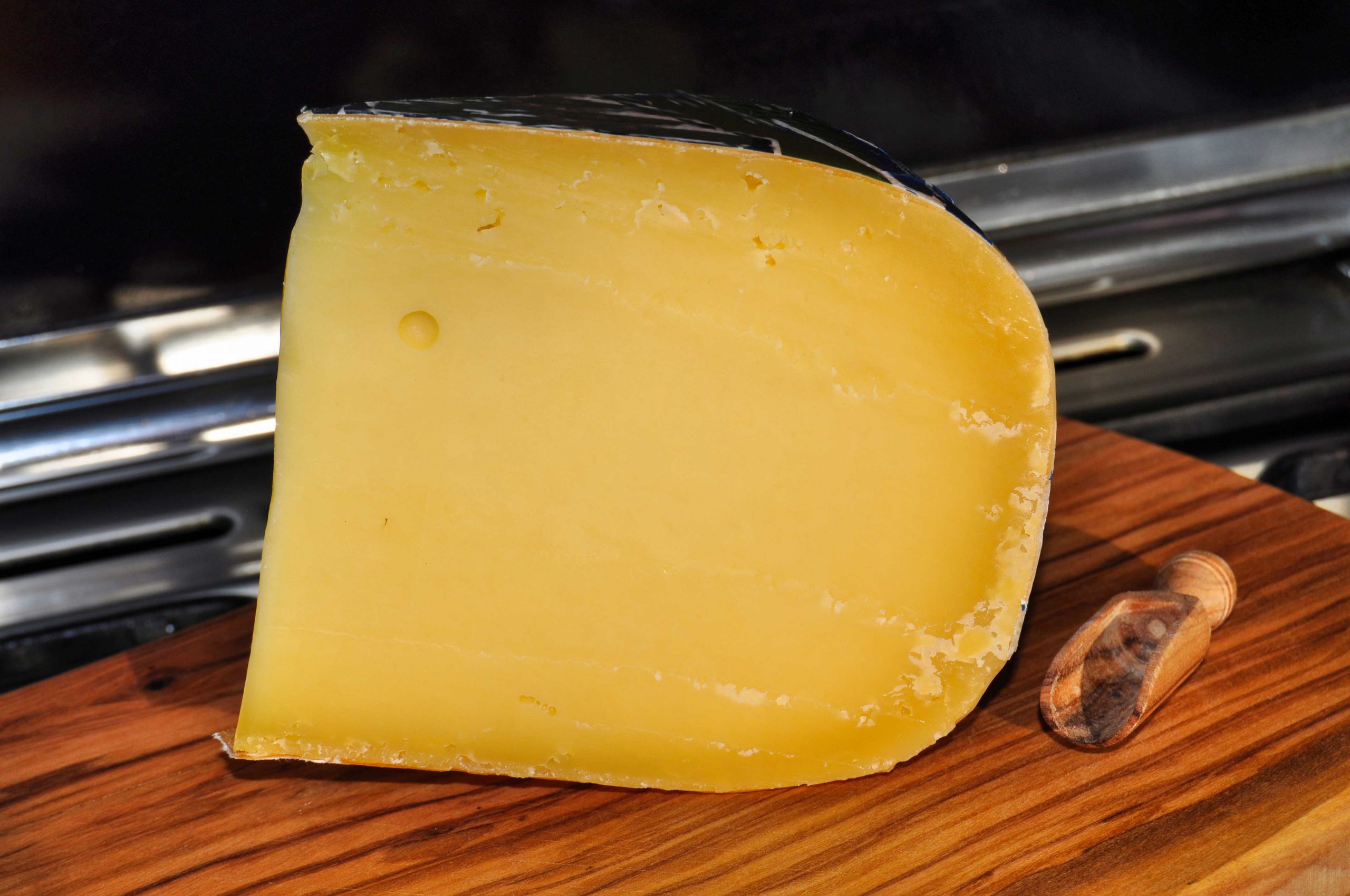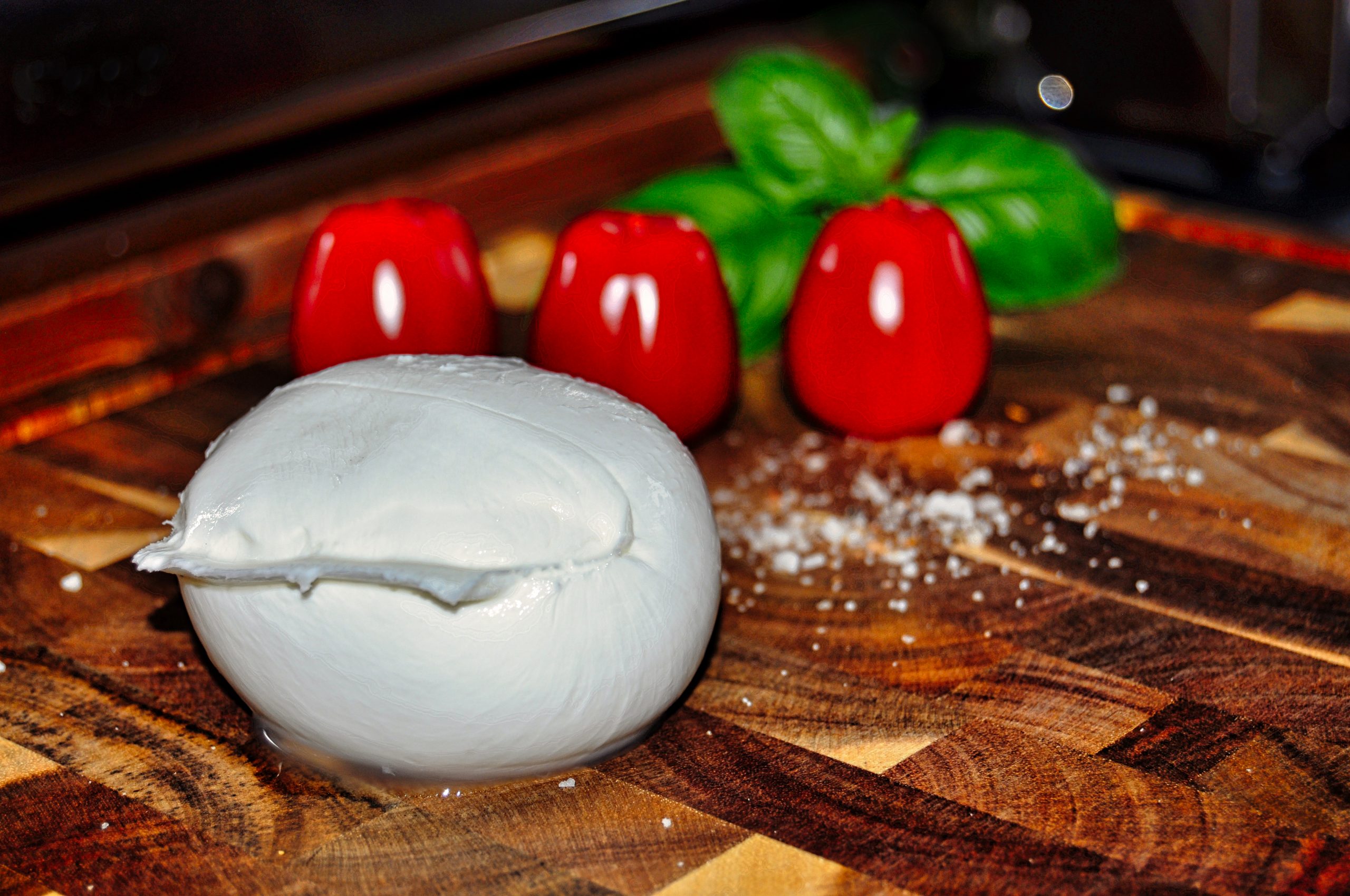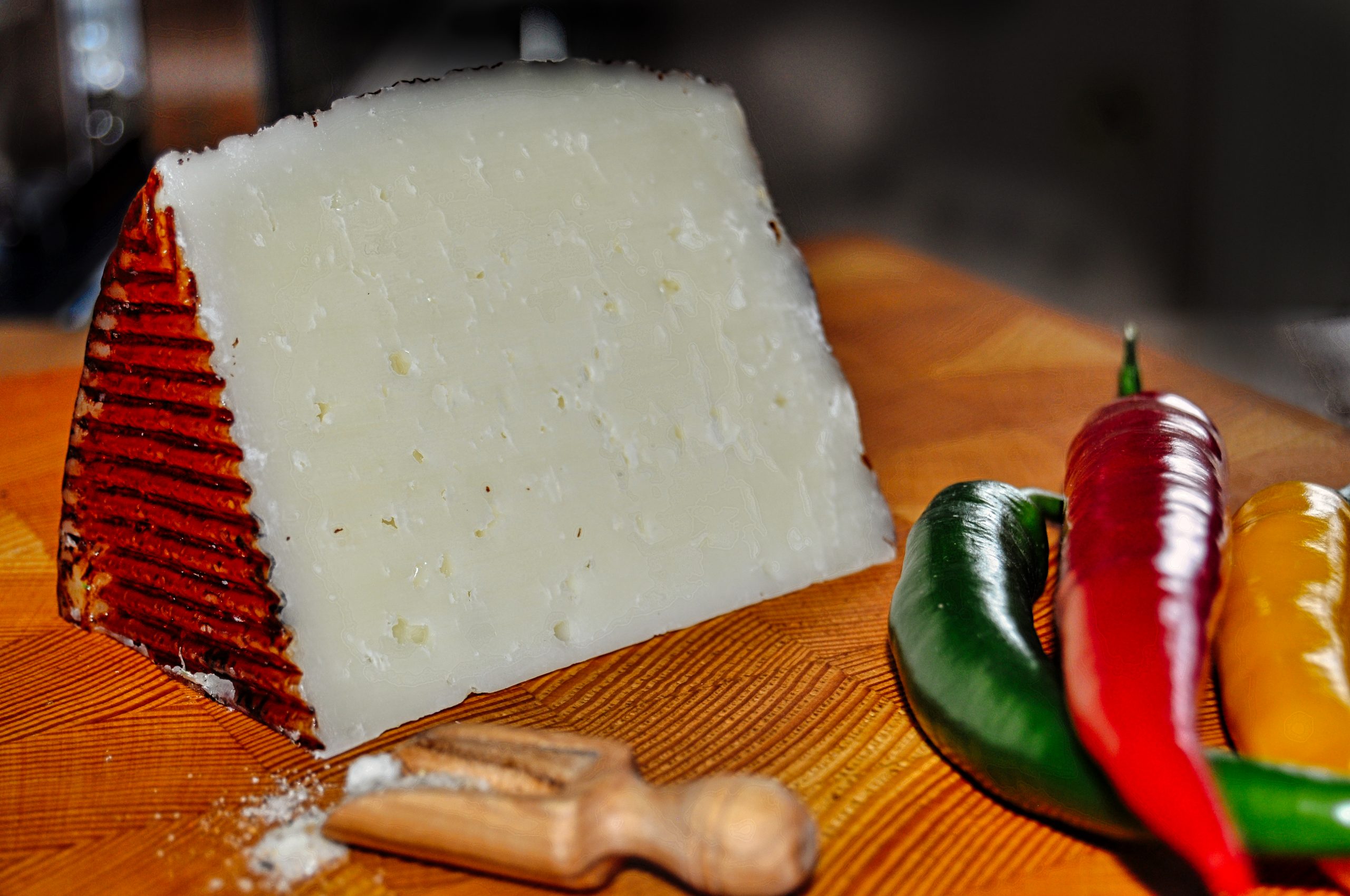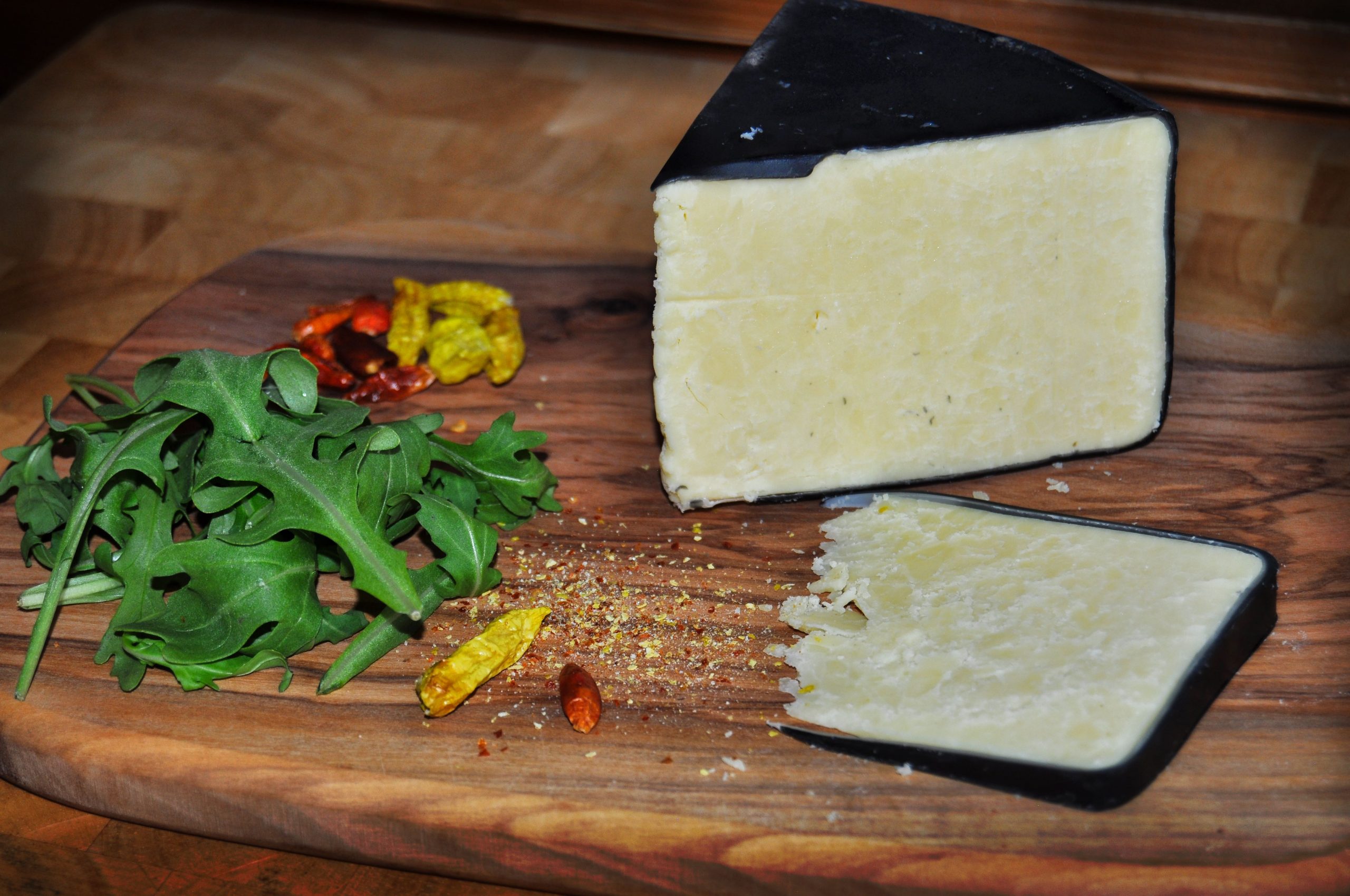Legend has it that mozzarella was invented when a lump of cheese fell into a pot of hot water: the name mozzarella is often used for a type of Italian kneaded cheese whose curd is doused with water at 80 degrees Celsius during the production process. Since mozzarella is edible without a ripening period, it belongs to the category of fresh cheeses, strictly speaking.
Traditional mozzarella is made from the milk of the black water buffalo – today, for cost reasons, mozzarella is mainly made from cow’s milk – nevertheless, a mozzarella made from the milk of the water buffalo is characterised by a special taste.
A mozzarella made from buffalo milk is especially appreciated for its creamy and soft consistency – a mozzarella made from cow’s milk has a much milder taste.
Rumour has it that one of the monks dropped a piece of curd from the buffalo’s milk into a pot of hot water, which is how the story of mozzarella took its course.
Domestic buffalo
In Naples, people are said to have kept domestic buffaloes as early as the second century AD: However, this had nothing to do with large-scale buffalo breeding, which only began later.
The first mozzarella is said to have been made from the milk of these domestic buffaloes. As with the history of Tête de Moine, monks play a decisive role in the history of mozzarella: in the 13th century, the southern Italian city of Capua had a cheese called mozza, which the monks of the monastery of San Lorenzo ad Septimum distributed to pilgrims along with bread. Rumour has it that one of the monks dropped a piece of curd from the buffalo’s milk into a pot of hot water, which is how the story of mozzarella took its course.
In 1570, the word mozzarella was mentioned for the first time in the “Works of Cookery” by the Italian chef Bartolomeo Scappi, who cooked for several popes in the Middle Ages.
At that time, mozzarella was a purely regional product, traditionally made from buffalo milk: It was generally assumed that only buffalo milk was suitable for making an aromatic mozzarella. In recent centuries, buffalo milk lost its status and was replaced by cow’s milk – today, buffalo milk plays a major role, especially in Asian cuisine.
Buffalo milk or cow’s milk?
Although the water buffalo is closely related to the classic dairy cow, the milk product of both dairy animals differs: The biggest difference between the two types of milk is the proportion of saturated fatty acids. Buffalo milk has a significantly higher fat content than cow’s milk – in addition, buffalo milk contains more calcium than cow’s milk. Last but not least, buffalo milk has a longer shelf life than cow’s milk.
Basically, it is impossible to say which of the two types of milk is preferable for the human body. Both types of milk can be used for different purposes: Buffalo milk is predestined for the production of aromatic mozzarella.
Buffalo farming in Italy began in the 11th century: a legend says that the Normans brought the buffalo to southern Italy. Who exactly brought the buffaloes to Italy will probably always remain a mystery – other theories assume that the first buffaloes originally came from India and were introduced to Italy by the Phoenicians.
Pasta Filata
When making mozzarella, the fresh buffalo milk is delivered to the dairy: Now the buffalo milk is filtered and heated to 36 degrees within 60 hours.
Mozzarella falls into the category of so-called pasta filata cheeses: The term Pasta Filata comes from Italian and means something like “drawn dough“. This term is used to describe all Italian cheeses whose milk is provided with rennet and acidified. This procedure is an important part of the filata process, which creates a kind of cheese dough. The cheese dough is then scalded with water at 80 degrees and kneaded almost like bread dough until its consistency is soft and flaky. The word “mozzare”, which is also in mozzarella, comes from Italian and means “to cut off”: Now the mozzarella is cut into pieces and shaped into the characteristic balls in which it is sold. Shaping these mozzarella balls requires skilled hands and is a craft in its own right.
Finally, the mozzarella is placed in a brine in which it ripens for one to three days. A longer ripening period is not necessary with mozzarella – like a fresh cheese, mozzarella is sold immediately after production. That is why mozzarella cheese has no rind, but a smooth skin and a flaky texture reminiscent of feta cheese.
Especially in the original Neapolitan pizza, an aromatic buffalo mozzarella is an obligatory pizza topping.
Mozzarella di Bufala Campana
Mozzarella does not necessarily have to be made from buffalo milk: In Italy, mozzarella made from cow’s milk goes by the name Fior di Latte.
In the meantime, mozzarella made from cow’s milk is much more widespread and popular than mozzarella made from buffalo milk.
This has not least to do with the fact that buffalo milk is far less produced than cow’s milk and is available at higher prices.
Nevertheless, a protected designation of origin has emerged for pure buffalo mozzarella from Italy, called Mozzarella di Bufala Campana DOP.
Only buffalo mozzarella produced from buffalo milk in certain provinces of the Italian regions of Campania and Lazio is allowed to bear this designation.
It is impossible to imagine countless Italian dishes without mozzarella: an absolute Italian classic in which mozzarella is indispensable is pizza. Especially in the original Neapolitan pizza, an aromatic buffalo mozzarella is an obligatory pizza topping.

Mozzarella and tomatoes – a special relationship
But pizza is by no means the only use for mozzarella: Mozzarella and tomatoes form a special relationship on the dinner plate, which is why mozzarella is also placed on the tomato sauce in pizza. But if you want to combine mozzarella with tomatoes, pizza is not the only option. One creation is a mozzarella-tomato carpaccio: cut up some San Marzano tomatoes and two scoops of mozzarella, place the mozzarella on top of the tomatoes and then drizzle the carpaccio with olive oil and lemon juice. If one wants it to be particularly fresh, one can sprinkle some herbs on top.
Usually one can buy packaged mozzarella in round balls weighing between 20 and 250 grams – most mozzarella is sold in balls. Sometimes one can find mozzarella that has been pressed into mushroom-shaped or plait-like shapes.
The uses of mozzarella are almost unlimited: Mozzarella forges a special relationship with tomatoes, especially the aromatic tomato varieties such as San Marzano tomatoes. When one hears the word mozzarella, it immediately becomes clear: this product can only come from Italy. Like Parmigiano Reggiano among the hard cheeses, mozzarella, especially Mozzarella di Bufala Campana, has earned itself a status among the fresh cheeses. No Italian buffet can be complete without an original Mozzarella di Bufala Campana. It is also a cheese that goes well with tuna and for gratinating.
Cover picture: Mozzarella di Bufala Campana, © Simon von Ludwig

 Deutsch
Deutsch







